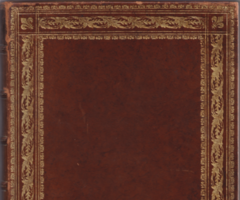Le Miroir de Jésus
The Miroir de Jésus, a masterpiece written during the last years of Caplet’s life, stands out both for the religious fervour of its message and for its spare sound, instrumental colour and harmonic refinement. Composed between April and September 1923, the work is based on Henri Ghéon’s “quinze petits poèmes sur les saints mystères du Rosaire”. A rosary is formed of three chaplets, each comprising five sets of ten beads, and this tripartite structure is reflected in this work which, from the “Annonciation” to the “Couronnement au ciel”, is cast in three sections (corresponding to the three chaplets): Miroir de joie, Miroir de peine and Miroir de gloire. Each section begins with an intensely poetic prelude for strings alone, followed by five episodes telling the story of Jesus ‘s life through the sufferings of his Mother—who is the “mirror” of the title. The piece is written for string quartet, mezzo-soprano, harp and female chorus split into three; this ensemble is flexible, however, since the chorus and strings can be proportionately increased. The chorus only appears in the two outer sections, which are imbued with hope, while the central section radiates sorrow. Without abandoning the work’s characteristic originality, in the tradition of Debussy in particular, Caplet references the techniques of medieval writing. The solo part stems from the vocal conventions of the period, somewhere between Debussy’s declamation and Schoenberg’s Sprechgesang (in the “Couronnement au ciel”). Le Miroir de Jésus was premiered in Lyon in February 1924, with a string orchestra and two harps, Claire Croiza in the solo part and Caplet conducting.

